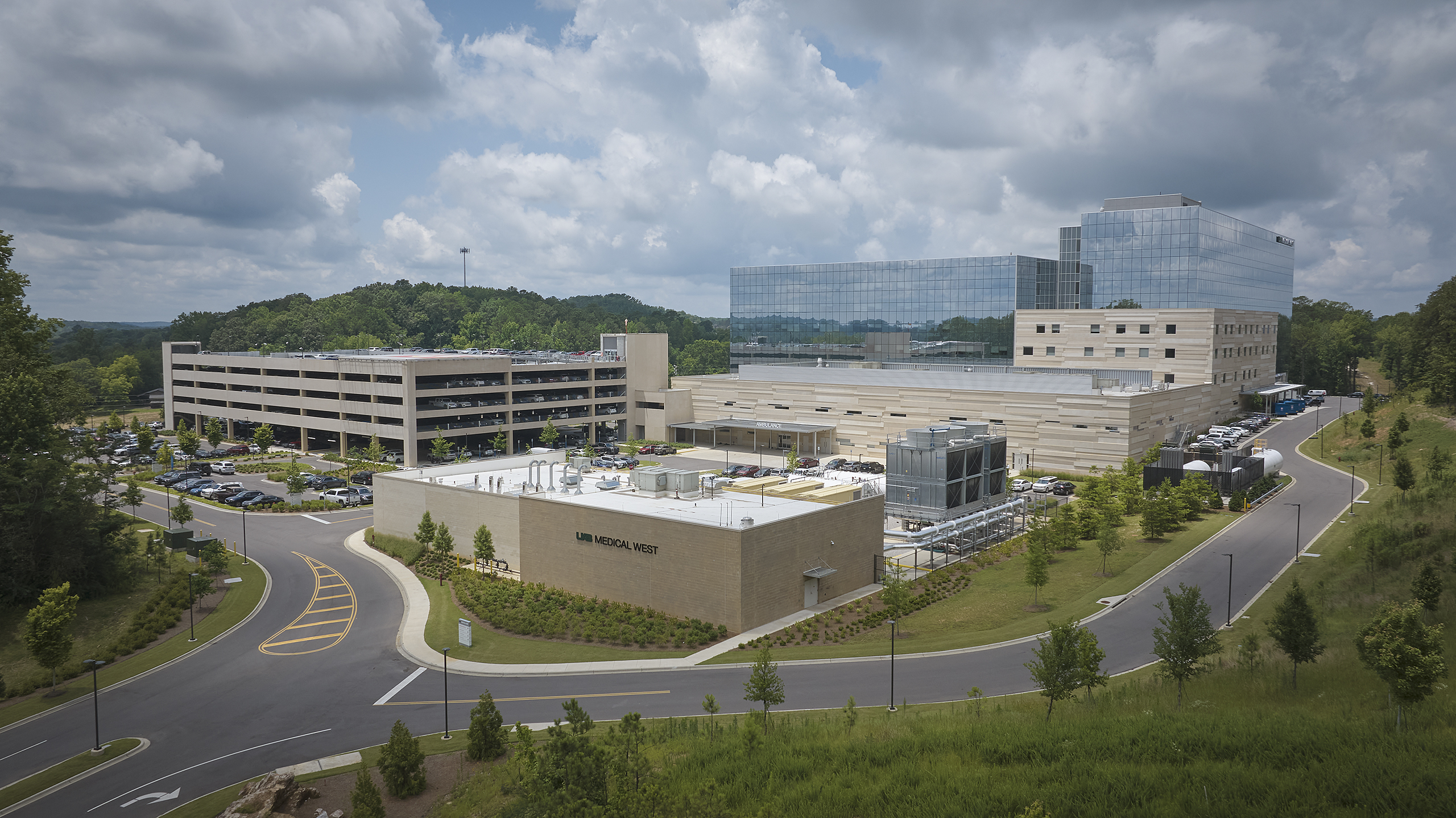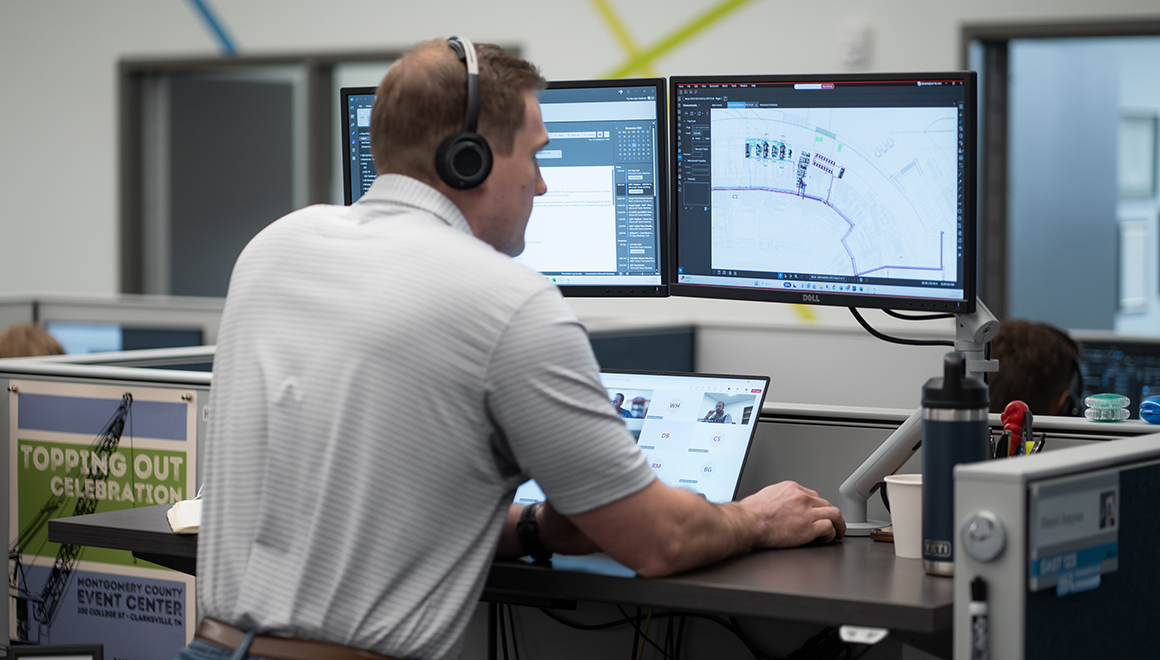Building the Future of Healthcare: SSR’s Master Planning Approach

At SSR, we believe infrastructure is more than systems—it’s the foundation for healing environments that support the physical and emotional well-being of patients, families, and caregivers. Our master planning process is designed to be collaborative, data-driven, and future-focused, aligning with the evolving needs of healthcare organizations.
Collaborative Planning Rooted in Expertise
With deep roots in healthcare since our founding in 1968, SSR brings over five decades of experience to every master planning engagement. Our team of 550+ professionals across 18 offices and 20+ service lines work closely with the owner’s planning, design, and construction (PDC) and care teams, engineering department, and architects to develop infrastructure scenarios that support architectural visioning aligned with long-term strategic goals.
We integrate sustainable design best practices to optimize facility enhancements, improve operational standards, and reduce utility and energy consumption. Whether planning a single facility or a multi-campus system, our approach ensures alignment with real-world system options and long-range client visions.
Facility Condition Assessments: The Foundation of Strategic Planning
Facility Condition Assessments (FCAs) and master plans are deeply interconnected in the lifecycle management of buildings and campuses. SSR’s robust FCA process provides a data-driven snapshot of the current state of facilities—identifying deficiencies, deferred maintenance, and system lifespans. A prioritized timeline of remediation spending is the baseline for master planning expansions and additions.
SSR’s FCA Comprehensive Approach Includes:
- On-site visual inspections of MEP, fire protection, medical gas, structural, enclosure, and other systems
- Interviews with facility and maintenance staff to uncover recurring issues
-
- The above often leads to enhanced efforts such as electrical load studies, hydronic flow modeling, etc.
- Cataloging system and equipment data: type, condition, expected life cycle
- Identification of deficiencies and initial recommendations for repair/replacement
- Capital expenditure (Cap-X) projections and analysis
- Contextual and deficiency-specific photography for documentation
Beyond Assessing Conditions: Building Optimization and Sustainability
Beyond evaluating current infrastructure, SSR helps healthcare organizations optimize building performance and advance sustainability goals—critical components of a comprehensive master planning strategy. Our Building Optimization and Sustainability team provides data-driven insights and actionable solutions that complement Facility Condition Assessments and long-term planning efforts.
Our capabilities include:
- Benchmarking and Certification: Benchmarking facilities in ENERGY STAR Portfolio Manager, as encouraged by ASHE’s Energy to Care program. For high-performing facilities, SSR can assist with ENERGY STAR or LEED for Existing Buildings certification.
- Performance Improvement Services: For facilities with room to improve, SSR offers energy audits and existing building commissioning—either standalone or enhanced with fault detection and diagnostics.
- Energy Modeling for Strategic Decisions: Energy modeling informs master planning by predicting how anticipated changes to a facility or campus will impact building loads, energy consumption, utility costs, and greenhouse gas emissions. High-level design strategies can be analyzed at both the building and central plant level to validate alignment with energy and sustainability goals.
By integrating these services into the master planning process, SSR helps healthcare organizations reduce operational costs, improve resiliency, and meet decarbonization objectives—all while supporting patient-centered environments.
Integrating FCA Insights into Master Planning
- Aligning Capital Needs with Long-Term Vision
Master plans outline a vision for future growth, space utilization, and modernization. FCAs ensure this vision is grounded by:
-
- Highlighting which buildings are worth renovating vs. replacing
-
- Identifying infrastructure upgrades needed to support changes in program
-
- Informing phasing strategies based on urgency and cost
- Budgeting and Funding Justification
-
- FCA data supports capital planning by quantifying needs (e.g., HVAC replacement, roof repairs).
-
- When integrated into a master plan, this helps:
-
- Build credible funding requests
-
- Sequence projects for maximum ROI
-
- Balance new construction with maintenance backlogs
- Risk Management and Compliance
FCAs include assessments of code compliance, safety, and accessibility. These findings are critical for master plans to:
-
- Address regulatory risks
-
- Create an improved maintenance working environment
-
- Plan for resiliency and sustainability upgrades
- Decision-Making Support
Together, FCAs and master plans provide a holistic view—combining what is (FCA) with what could be (master plan). This empowers leadership to:
-
- Make informed, transparent decisions
-
- Prioritize projects based on condition, mission alignment, and cost
-
- Communicate clearly with stakeholders
Specific System Evaluations
- Emergency Power: Evaluate generator capacity and redundancy; ensure compliance with healthcare standards.
- Normal Power: Analyze electrical distribution for reliability and expansion potential.
- Heating Hot Water/Chilled Water/Steam: Review system performance, available capacity, and energy efficiency; recommend upgrades.
- Air Handling Units: Identify equipment near end-of-life; propose replacements for efficiency and infection control.
- Medical Gas System: Assess condition, capacity, and compliance; evaluate potential full replacement.
- Domestic Hot Water: Assess current capacity, demand, and future needs; propose upgrades or replacements.
Sustainability and Decarbonization at the Core
Sustainability isn’t an afterthought—it’s a guiding principle that can challenge budgets and thinking. SSR leads sustainability visioning charrettes to explore climate-responsive design, energy and water efficiency, waste management, and decarbonization strategies. We use open-source energy modeling tools like EnergyPlus, OpenStudio, and Honeybee to analyze building performance and support high-efficiency, low-carbon design outcomes.
Key Performance Indicators (KPIs) and qualitative criteria are established early and documented in an Owner’s Project Requirements (OPR) to ensure accountability and adaptability throughout the project lifecycle.
Navigating Complex Situations and Stakeholder Alignment
Healthcare master planning often involves navigating complex organizational structures. SSR acts as an extension of the Facilities and PDC teams, helping prioritize system upgrades and replacements in alignment with programmatic planning. We facilitate visioning sessions and translate results into actionable guidance. Many times, deep collaboration ensures timely and accurate 3rd party cost estimates.
From Vision to Documentation
Our master planning deliverables include:
- Detailed facility condition assessments
- Conceptual narrative and sketches summarizing existing system conditions, capacity analysis, and future requirements
- Scenario planning and phasing recommendations for MEP/FP systems
- Sustainability and performance metrics
- Cost and implementation sequencing
- Tabbed bound documentation with narratives, drawings, and cost spreadsheets
This comprehensive documentation ensures transparency, clarity, and alignment with architectural and space planning efforts.
Proven Success Across Healthcare Systems
SSR’s long-term partnerships with leading healthcare organizations—including HCA, Houston Methodist, Vanderbilt University Medical Center, and Texas Children’s Hospital—demonstrate our commitment to scalable, future-proofed design. From inpatient hospitals to outpatient clinics, we’ve helped clients transition to new care delivery models while maintaining consistency and excellence.
Planning with Purpose, Designing for Impact
At SSR, master planning is more than a technical exercise—it’s a strategic partnership built on trust, expertise, and a shared vision for the future of healthcare. By combining deep facility insights, stakeholder collaboration, and forward-thinking design, we help healthcare organizations make informed decisions that enhance performance, resilience, and patient experience.
From comprehensive facility condition assessments to sustainability-driven design and innovative technology integration, our approach ensures that every plan is grounded in real-world data and aligned with long-term goals. Whether supporting a single medical center or a multi-campus system, SSR is committed to delivering master plans that are actionable, adaptable, and impactful—today and for decades to come.



